
Prepare yourself for a chilling journey through the darkest chapters of aviation history as we delve into the top 5 worst plane crashes ever recorded. Despite being hailed as the safest mode of transportation, air travel has seen its share of tragedy, leaving behind a stark and devastating legacy. In this exploration, we will confront the sobering reality that accompanies each crash on this list—a reminder of the inherent risks associated with flying, despite its commendable safety track record. From the circumstances leading to the catastrophic events to the aftermath that shook the world, we will delve into the causes and consequences of these harrowing incidents. Brace yourself for an unsettling voyage into the annals of aviation disasters.
15. Algerian Air Force transport aircraft
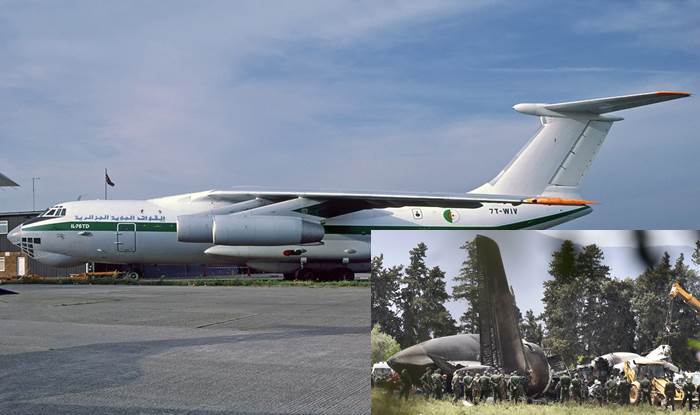
April 11, 2018, marked a somber day as an Algerian Air Force transport aircraft tragically crashed shortly after departing from Boufarik Airport. The Ilyushin Il-76, carrying 257 occupants, met a devastating fate as it succumbed to the forces of the earth, claiming the lives of all on board.
14. Nigeria Airways Flight 2120
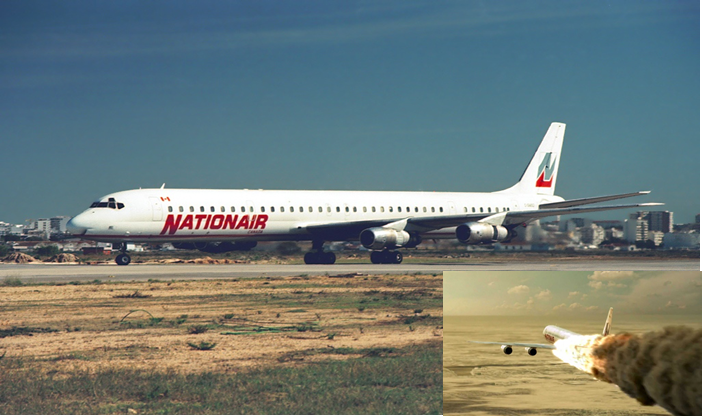
July 11, 1991 marked a tragic day in aviation history when Nigeria Airways Flight 2120, a Douglas DC-8-61 aircraft operated by Nationair Canada, met with disaster in Jeddah, Saudi Arabia. The catastrophe unfolded as two tires ignited during takeoff, sparking an in-flight fire that led to the aircraft’s demise. The grim outcome claimed the lives of all 261 occupants on board. This catastrophic event stands as the deadliest aviation accident involving a DC-8, etching a somber chapter in the annals of aviation. Additionally, it holds the dubious distinction of being the largest aviation disaster involving a Canadian-registered aircraft and ranks as the second-worst accident in the history of Saudi Arabia.
13. China Airlines Flight 140
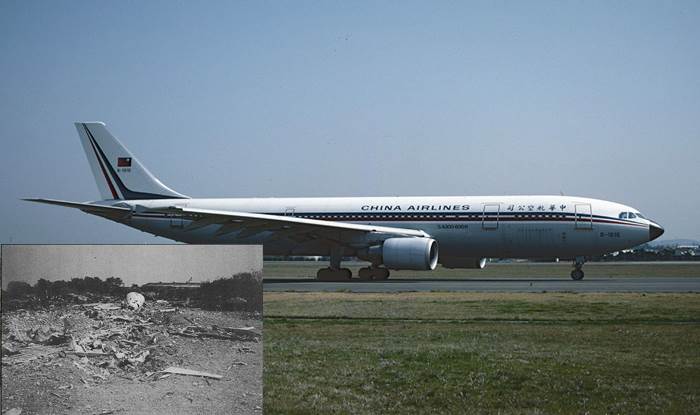
April 26, 1994, marked a tragic turn for China Airlines Flight 140 as it approached Nagoya Airport, Japan. The routine flight took a fatal turn when the Airbus A300B4-622R’s First Officer accidentally pressed the takeoff/go-around button, initiating a sequence that set the throttle to takeoff levels. Despite the crew’s efforts to rectify the situation, their actions inadvertently led to a catastrophic crash. The harrowing outcome claimed the lives of 264 individuals, including 15 crew members and 249 passengers, out of the 271 people on board. This devastating incident serves as a stark reminder of the critical importance of precise actions and quick responses in ensuring aviation safety.
12. American Airlines Flight 587
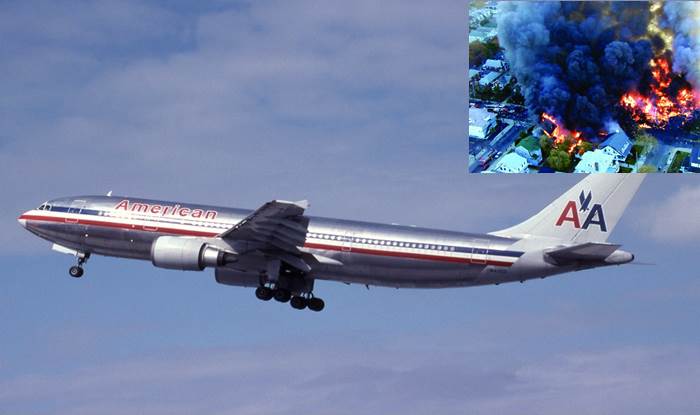
November 12, 2001, marked a somber day in aviation history when American Airlines Flight 587, an Airbus A300, tragically crashed in the Belle Harbor neighborhood of Queens, New York. The flight had just departed John F. Kennedy International Airport en route to Las Américas International Airport in Santo Domingo when disaster struck. Investigations later revealed that the first officer’s excessive use of the rudder in response to wake turbulence from a Japan Airlines 747 contributed to the crash. The catastrophic event claimed the lives of all 260 individuals on board the aircraft, along with the tragic loss of five individuals on the ground. This devastating incident stands as the second-deadliest aviation accident on U.S. soil, following closely behind the tragic American Airlines Flight 191 disaster.
11. Air Lines Flight 007
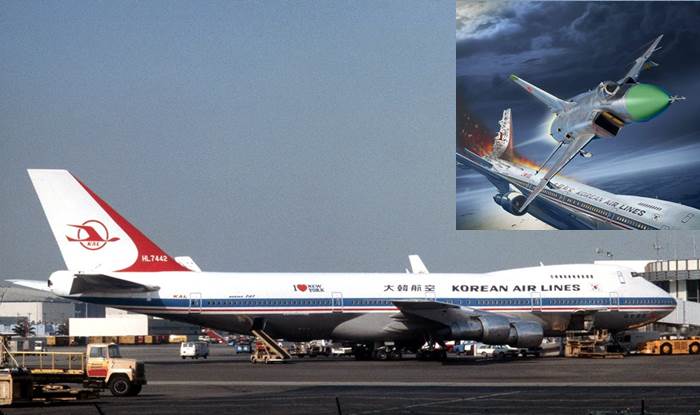
In the skies of September 1, 1983, a tragic event unfolded as a Soviet interceptor, the Sukhoi Su-15, targeted Korean Air Lines Flight 007, a Boeing 747-230B en route to Gimpo International Airport in Seoul, South Korea. This fateful incident occurred when the airliner inadvertently entered Soviet airspace. The outcome was devastating, with all 269 individuals on board losing their lives.
10. Pan Am Flight 103
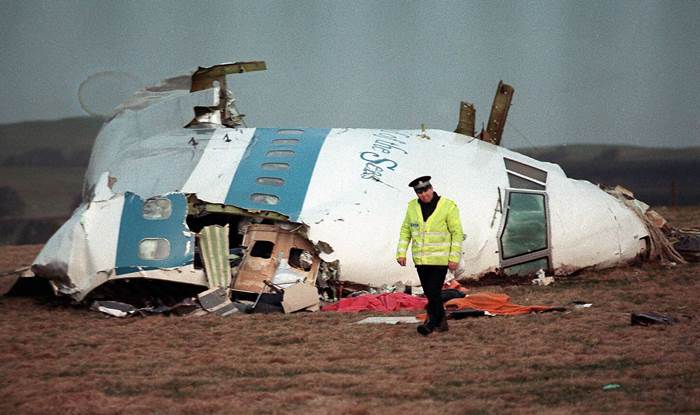
Tragedy struck on December 21, 1988, when Pan Am Flight 103, a Boeing 747-121 destined for New York–JFK from London–Heathrow, with a subsequent route to Detroit, fell victim to a terrorist bomb while flying over the town of Lockerbie, Scotland. The devastating explosion claimed the lives of all 259 occupants aboard the aircraft and 11 individuals on the ground, all residents of Sherwood Crescent, Lockerbie. This grim event stands as the most catastrophic terrorist attack involving an aircraft in the UK and the deadliest act of terrorism on British soil. In the aftermath of the crash, the Federal Aviation Administration swiftly implemented enhanced security measures for American airlines departing from 103 airports across Western Europe and the Middle East.
9. American Airlines Flight 191
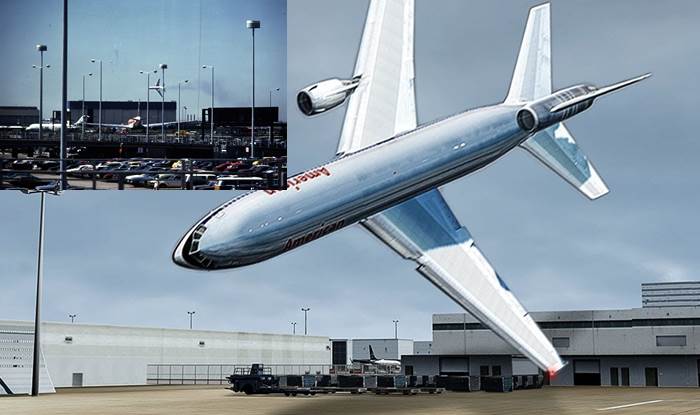
In the annals of aviation history, May 25, 1979, marks a tragic chapter with the calamitous fate of American Airlines Flight 191, a McDonnell Douglas DC-10-10. The aircraft met its demise shortly after takeoff from Chicago O’Hare Airport when the number one engine and pylon detached from the wing. This catastrophic event ruptured hydraulic lines, leading to the retraction of leading edge lift devices on one side of the aircraft, resulting in asymmetrical lift and loss of control. The investigation revealed that improper maintenance procedures were to blame for this fatal mishap. Regrettably, the crash claimed the lives of all 271 passengers and crew on board, along with two individuals on the ground. Its grim toll solidifies it as the deadliest commercial aircraft accident in United States history. Furthermore, until the tragic events of September 11, 2001, it stood as the nation’s most devastating aviation disaster.
8. Iran Air Flight 655
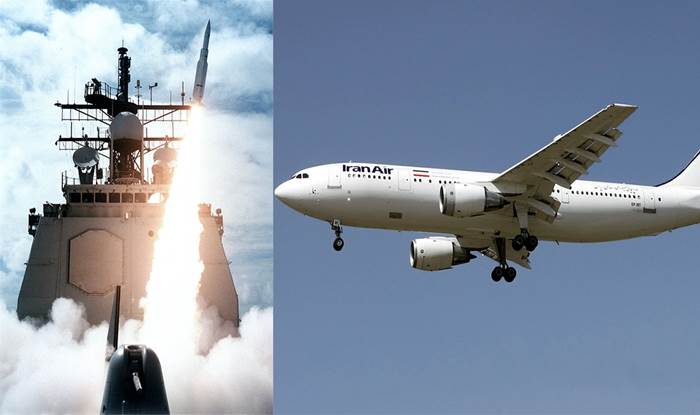
A tragic incident unfolded on July 3, 1988, when Iran Air Flight 655, an Airbus A300-200 civilian airliner, fell victim to two surface-to-air missiles launched from the U.S. Navy guided missile cruiser USS Vincennes, while flying over the Strait of Hormuz. The devastating outcome claimed the lives of all 290 passengers and crew on board the aircraft. This catastrophic event stemmed from a sequence of events that led the crew of the USS Vincennes to mistakenly identify the airliner as an Iranian Air Force F-14, culminating in the tragic loss of innocent lives.
7. Malaysia Airlines Flight 17
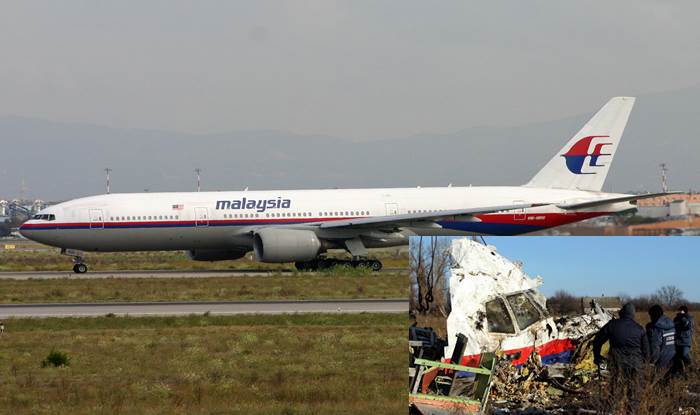
July 17, 2014, marks a harrowing moment in aviation history as Malaysia Airlines Flight 17, a Boeing 777-200ER en route from Amsterdam to Kuala Lumpur, met a tragic fate in the skies above Eastern Ukraine, near the Ukraine/Russian border, amidst the conflict in Donbas. The airliner, carrying 298 individuals comprising 283 passengers and 15 crew members, suffered a fatal blow, claiming the lives of all on board. Among the crew were Malaysians, while the passengers hailed from various nations, with a majority from the Netherlands. The backdrop of escalating tensions and preceding incidents of Ukrainian Air Force (UAF) aircraft being downed over rebel-held territories set the stage for this catastrophic event. In the aftermath of the crash, a VKontakte social media post attributed to Igor Girkin, leader of the Donbas separatist militia, surfaced, claiming responsibility for the downing of a Ukrainian An-26 military transport near Torez. However, the post was swiftly removed, and the separatists disavowed any involvement in the tragedy.
6. Saudi Arabian Airlines Flight 163
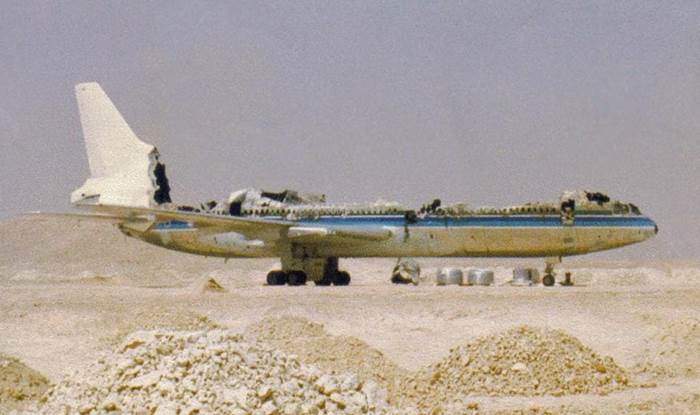
In a tragic event on August 19, 1980, Saudi Arabian Airlines Flight 163, operating a Lockheed L-1011, marked a grim milestone in aviation history as the deadliest accident not resulting from a crash. Responding to a fire erupting in the aft baggage compartment, the crew executed an emergency landing in Riyadh. However, the flames breached the compartment ceiling, infiltrating the passenger cabin. Despite successfully bringing the aircraft down, the captain’s decision to continue taxiing instead of initiating an immediate evacuation proved fatal. By this time, toxic fumes had rendered everyone onboard unconscious, rendering them incapable of opening any exits or evacuating. Tragically, all 301 passengers and crew perished from suffocation before rescue crews could access the sealed aircraft. Subsequently, the plane was engulfed in flames, leaving no survivors.
5. Air India Flight 182
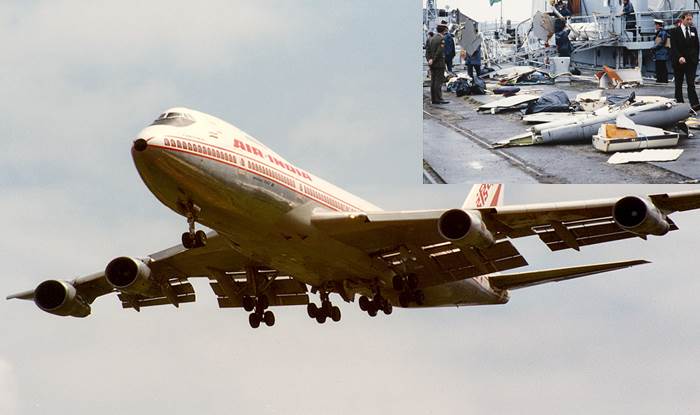
June 23, 1985, bore witness to the tragic fate of Air India Flight 182, a Boeing 747-237B en route from Toronto and Montreal to London and Delhi. Off the southwest coast of Ireland, disaster struck as a bomb detonated in the cargo hold. The explosion claimed the lives of all 307 passengers and 22 crew members aboard. Notably, one passenger, registered as “M. Singh,” failed to board the flight. However, his suitcase, housing the explosive device, found its way onto the aircraft. Despite extensive investigations, “M. Singh” remained unidentified and at large. Subsequent findings pointed towards Sikh extremists as the perpetrators, seeking retribution for the Indian government’s assault on the Golden Temple in Amritsar, a revered Sikh shrine. This tragic incident stood as the deadliest act of terrorism involving an airplane at the time.
4. Turkish Airlines Flight 981
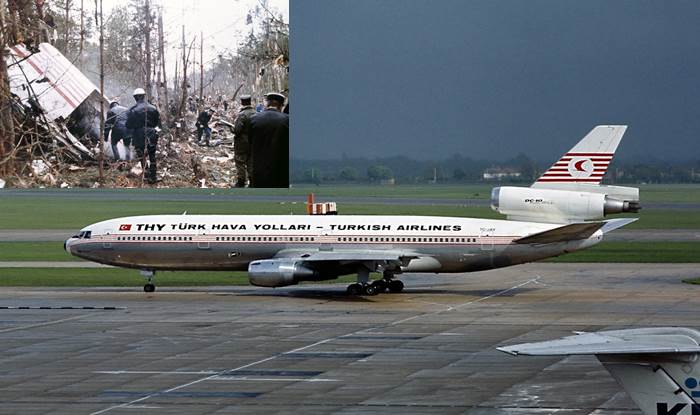
March 3, 1974, marks the tragic date of Turkish Airlines Flight 981, a McDonnell Douglas DC-10, crashing in a forest northeast of Paris, France. Shortly after departing from Orly airport en route to London, the aircraft met its demise, claiming the lives of all 346 occupants. Investigation revealed that a catastrophic event unfolded as the cargo door detached, triggering an explosive decompression. This resulted in the collapse of the floor directly above, severing crucial control cables. Deprived of control over the elevators, rudder, and No. 2 engine, the pilots faced an uncontrollable descent. The aircraft plummeted into a steep dive, culminating in the fatal crash. At the time, it stood as the deadliest aviation disaster until the Tenerife tragedy in 1977. Remarkably, it remains the deadliest single-aircraft crash with no survivors and holds the distinction of being the deadliest single-aircraft incident not involving a Boeing 747.
3. Saudia Flight 763 – Kazakhstan Airlines Flight 1907
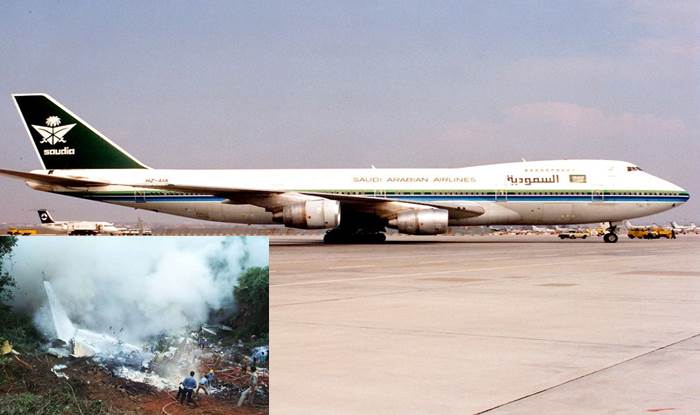
November 12, 1996, marked the tragic occurrence of the Charkhi Dadri mid-air collision between Saudia Flight 763 and Kazakhstan Airlines Flight 1907 over Charkhi Dadri, India. The collision’s primary cause was attributed to the Kazakh pilot flying at an altitude lower than the assigned clearance. The devastating outcome claimed the lives of all 349 passengers and crew aboard both aircraft, rendering it the deadliest mid-air collision in history with no survivors. In response, the Ramesh Chandra Lahoti Commission, tasked with investigating the incident, proposed the implementation of the “semi-circular rule” to prevent aircraft from converging at the same altitude from opposite directions. Subsequently, Indian Civil Aviation Authorities mandated the installation of Traffic Collision Avoidance Systems (TCAS) on all aircraft operating in and out of India, establishing a global precedent for TCAS usage.
2. Japan Airlines Flight 123
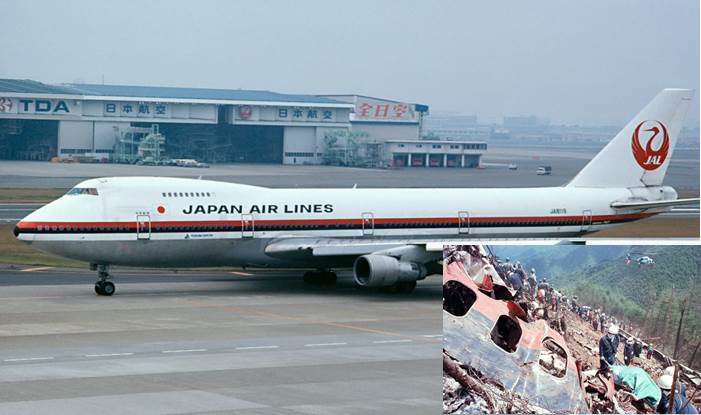
Japan Airlines Flight 123’s tragic crash on August 12, 1985, remains the deadliest single-aircraft accident in history, claiming the lives of 520 individuals aboard a Boeing 747. The catastrophic event was triggered by an explosive decompression resulting from a faulty aft pressure bulkhead repair, which failed during the flight. This failure led to the destruction of most of the aircraft’s vertical stabilizer and the severing of all hydraulic lines, rendering the 747 virtually uncontrollable. Remarkably, the skilled pilots managed to sustain flight for 32 minutes post-failure before the inevitable collision with a mountain. Regrettably, all 15 crew members and 505 of the 509 passengers perished in the crash. Tragically, misjudgment during a helicopter flyover led Japanese military personnel to erroneously believe there were no survivors, delaying rescue efforts until the following day. Medical assessments later revealed that several passengers likely survived the impact and could have been rescued if not for the delayed response. Miraculously, four passengers survived the ordeal entirely, being discharged from the hospital alive.
1. Tenerife Airport Disaster
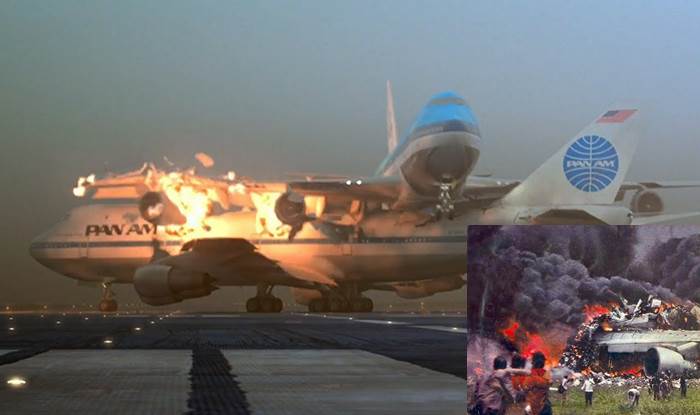
The Tenerife airport disaster, occurring on March 27, 1977, stands as the deadliest accident in terms of airliner passenger fatalities. A total of 583 lives were lost when a KLM Boeing 747, in an attempted takeoff, collided with a taxiing Pan Am 747 at Los Rodeos Airport in Tenerife, Spain. Tragically, all 234 passengers and 14 crew members aboard the KLM aircraft perished, along with 335 of the 396 passengers and crew aboard the Pan Am aircraft.
The primary cause was attributed to pilot error, as the KLM captain initiated takeoff under the mistaken belief of having obtained air traffic control clearance. Contributing factors included a terrorist incident at Gran Canaria Airport, leading to numerous flights being diverted to Los Rodeos, a smaller airport ill-equipped to handle such large aircraft, compounded by dense fog. Visibility was severely impaired, with the KLM crew only spotting the Pan Am aircraft moments before impact. This catastrophic event had a profound impact on aviation practices, particularly in communication protocols. Standardized phraseology in air traffic control communication became a focal point for controllers and pilots alike. Additionally, the concept of “Cockpit Resource Management” was integrated into flight crew training, emphasizing shared decision-making and the recognition that the captain is fallible. Collaboration and combined crew input during aircraft operations are now strongly encouraged, aiming to prevent such tragedies from recurring.

